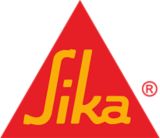
Sikaflex®-292
Multi-purpose adhesive for marine applications
Sikaflex®-292 is a non-sag 1-component polyurethane adhesive of thixotropic, paste-like consistency which cures on exposure to atmospheric moisture. It exhibits excellent adhesive properties and a good mechanical strength.
- Multi-purpose sealant and adhesive
- Good gap-filling properties
- Can be painted
- Bonds well to a wide variety of substrates


